A writer’s job is not easy; in addition to logic and focus, one must stay in front of the monitor for several hours. Due to this constant focus in air-conditioned environments, many suffer from visual problems, such as eye fatigue and headaches. The quality of a monitor can significantly improve not only eye health but productivity. That is why choosing the best monitor for writers is so important. No, you don’t need a curved monitor for writing ( but if you still want to, we recommend this one ).
Despite having excellent knowledge of technology, there are many options, which makes a choice difficult. Thinking about it, we chose the best monitors for visual comfort, workspace, ergonomics, cost-benefit, etc.
That way, we will choose some monitors for sale in the USA that are ideal for writing. After all, you want to save time, money and choose the best in the price range you can afford, don’t you?
We will not repeat the instructions in our guide on how to choose a monitor. Then read it if you don’t understand resolution, panel technology, update frequency, response time, etc. Or, rely on the opinion of experts, writers and programmers who recommend the following monitors:
Table of Contents
The 8 Best Monitor for Writers
| Image | Product | Details | Price |
|---|---|---|---|
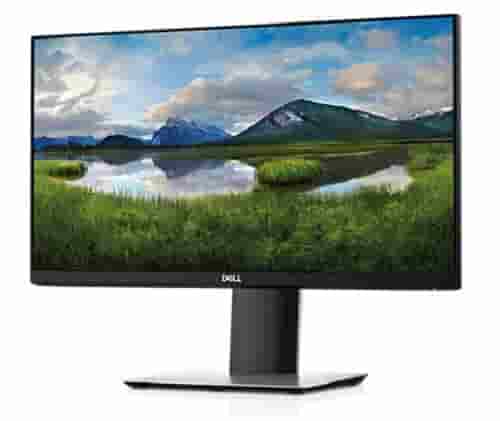 |
Dell P2219H | Screen Size: 21.5 Inches Display Technology: LCD Color: Black Weight: 11 pounds Aspect Ratio: 16:09 Refresh Rate: 60Hz Resolution: FHD 1080p Dimensions: 19.19 x 6.54 x 18.58 inches |
Check Price |
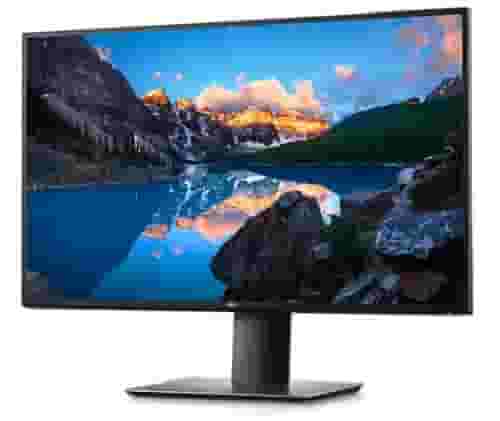 |
Dell Ultrasharp U2720Q | Screen Size: 27 Inches Display Technology: LCD Color: Black Weight: 14.6 pounds Aspect Ratio: 16:9 Refresh Rate: 60 hertz Resolution: 4K UHD 2160p Dimensions: 24.07 x 7.28 x 20.68 inches |
Check Price |
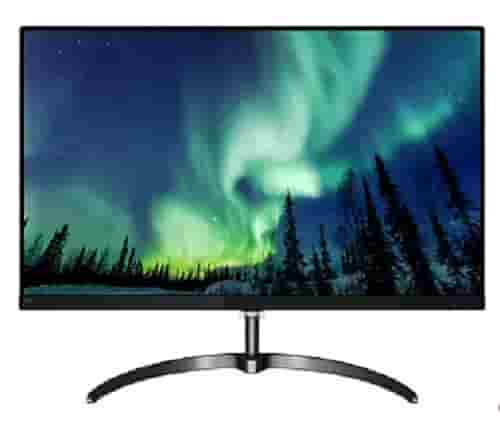 |
Philips 276E8VJSB | Screen Size: 27 Inches Display Technology: LED Color: Gunmetal Weight: 10.67 lbs Aspect Ratio: 16:9 Refresh Rate: 60 hertz Resolution: 4K UHD 2160p Dimensions: 24.13 x 7.44 x 18.35 inches |
Check Price |
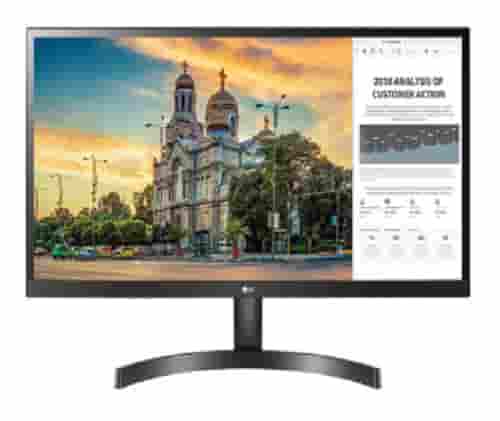 |
LG 29WK500-P | Screen Size: 29 Inches Display Type: LED Color: Black Weight: 10.78 pounds Aspect Ratio: 21:9 Refresh Rate: 75 hertz Resolution: FHD 1080p Dimensions: 8.23 x 27.48 x 16.18 inches |
Check Price |
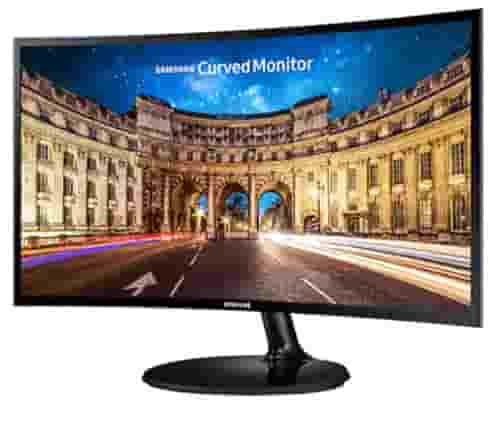 |
SAMSUNG LC24F390FHNXZA | Screen Size: 24 Inches Display Technology: LCD Color: Black Weight: 7.30 lbs Aspect Ratio: 1.78:1 Refresh Rate: 60 hertz Resolution: FHD 1080p Dimensions: 21.56 x 3.44 x 12.84 inches |
Check Price |
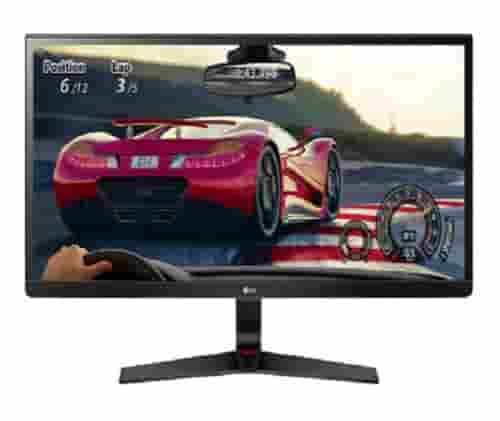 |
LG 29UM69G-B | Screen Size: 29 Inches Display Type: LED Color: Black Weight: 12.13 lbs Aspect Ratio: 21:9 Refresh Rate: 75 hertz Resolution: FHD 1080p Ultra Wide Dimensions: 31.89 x 15.75 x 5.91 inches |
Check Price |
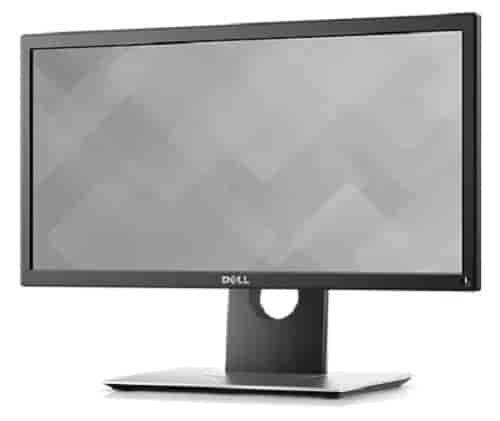 |
Dell P2018H | Screen Size: 20 Inches Display Type: LED Color: Black Weight: 5.30 lbs Aspect Ratio: 16:09 Refresh Rate: 100 hertz Resolution: HD+ Dimensions: 18.2 x 10.7 x 2 inches |
Check Price |
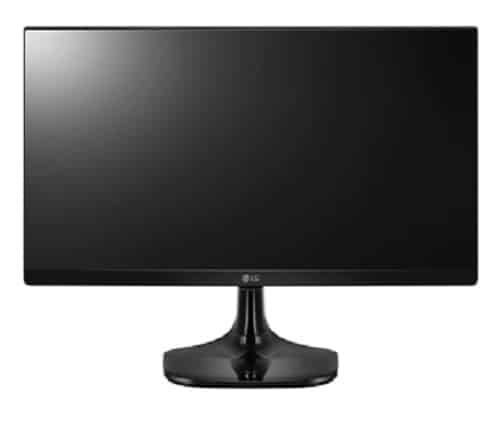 |
LG 25UM58-P | Screen Size: 25 Inches Display Technology: LCD Color: Black Weight: 8.80 lbs Aspect Ratio: 21:9 Refresh Rate: 60 hertz Resolution: FHD Ultra Wide 1080p Dimensions: 24 x 7.4 x 15.1 inches |
Check Price |
➤ Which Best Monitor for Writers to Buy?
Writers are always on the hunt for new ways to improve their craft. One of those means is having a monitor that can help you see what you’re typing and how it appears.
However, not all monitors are created equal, and picking one out from the many options available can be daunting. This post will go over some of the best monitors for writers to make your decision-making process more accessible and confident.
Dell P2219H – 22 Inch Full HD Monitor For Writers
| Specifications Of This Dell P2219H | |
|---|---|
| Screen | : 21.5″ IPS 1920x1080p 60 Hz (Full HD) |
| Brightness | : 250 cd/m2 |
| Static contrast | : 1000: 1 |
| Refresh rate | : 60Hz |
| Colors | : 99% sRGB – 8 Bits (16.7 million colors) |
| Viewing angles | : 178/178º |
| Ports | : 1x HDMI 1.4, 1x DisplayPort 1.2, 1x VGA, USB Hub (3 USB) |
| VESA | : 100x100mm |
| Cables Included | : DisplayPort Cable and USB 3.0 Upstream Cable |
You may not need a 4K or expensive monitor to writing, just more ergonomic. Therefore, the Dell P2219H 22 Inch Full HD can serve as a glove both in image quality and cost-benefit.
We selected the model for presenting the best of the Dell professional line at a fair price for what you will receive in return. You’ll have an IPS screen with perfect viewing angles and colors, Full HD 1080p resolution, height adjustment, rotation, pivot, and tilt. This monitor also has a DisplayPort connection, which is the standard high-definition multimedia interface.
We have already reviewed the Dell P2719H, which uses the same panel and has the same properties as the P2219H. If you are interested in learning more about Dell’s line of writer monitors, we recommend that you read our review.
Either way, this monitor aims to offer visual comfort and ergonomics for writers. In addition to the previously mentioned settings, Flicker Safe and blue light reduction technologies are essential for programmers and writers. They spend a lot of time in front of the screen.
Due to the affordable price and thin edges, it is generally used in configurations with two monitors. One is at 90º for code and writing, and another in the normal position for reading and debugging.
As nothing is perfect, the problem with this model is its availability, which is difficult to find in stock. Check the offers by the button below; if you find it in stock, it is worth buying as soon as possible; it is the line with the best cost-benefit from Dell currently for writing and professional use and Full HD resolution. If the 21.5″ screen is small, there is another version of this 23.8″ monitor, the P2419H.
Dell Ultrasharp U2720Q – 27 Inch 4K UHD Monitor For Writers
| Specifications Of This Dell Ultrasharp U2720Q | |
|---|---|
| Screen | : 27 ”IPS 3840x2160p (4K) |
| Brightness | : 350 cd/m2 |
| Static contrast | : 1300:1 |
| Refresh rate | : 60Hz |
| Colors | : 99% sRGB – 10 Bits (1.07 billion colors) |
| Viewing angles | : 178/178º |
| Ports | : 1 x DisplayPort, 1 x HDMI, 2 x USB Type-C, 3 x USB 3.0, 1 x Audio Line out |
| VESA | : 100x100mm |
We chose the Dell U2720Q for the first position due to its cost-benefit. Although it is an expensive monitor like all quality sold in the USA, it is a great investment.
Prepared for the future, its UltraHD (4k) resolution offers a wide working area without enlarging the screen layout. However, this 27 Inch 4K UHD is good to use with a scale of 150% in Windows.
Another positive point for writers is the ergonomics of this monitor. It offers height, rotation, and tilt adjustment. That way, you can adjust according to your need. Combined with visual comfort technologies, such as reducing the blue light level and Flicker-Free, you can focus on codes or texts without discomfort.
It offers an excellent level of brightness; with anti-reflective film 3H, you can writes even in well-lit environments. The colors are vibrant and sharp, making it also suitable for design writes, should you need it. It’s not only the best for writers, but it is also a great monitor for gaming. Compatible as standard VESA 100x100mm is a great option if you want to have multiple monitors in the future.
Philips 276E8VJSB – Best 27 Inch 4K Monitor For Writers
| Specifications Of This Philips 276E8VJSB | |
|---|---|
| Screen | : 27” IPS 3840x2160p (4K) |
| Brightness | : 350 cd/m2 |
| Static contrast | : 1000: 1 |
| Refresh rate | : 60Hz |
| Colors | : 109% sRGB – 10 Bits (1.07 billion colors) |
| Viewing angles | : 178/178º |
| Ports | : 2 x HDMI 2.0 (MHL), 1 x Display Port 1.2, 1 x PC Audio-in |
| VESA | : Without VESA |
To writers looking for a 4K monitor with the best value, I present the Philips 276E8VJSB 27 inch (68.6 cm).
This best 27 Inch 4K monitor is great for write, image, and video work, featuring a large workspace. It is comparable to having 4 FullHD screens when choosing not to use layout scaling.
The screen uses an IPS panel with better viewing angles than the previous version ( 288P6LJEB ). It has no true HDR but partly offers vibrant, eye-popping colors.
It comes with an HDMI cable, but to get 4K resolution at 60Hz, you’ll need to change your monitor settings to HDMI 2.0. The easiest way to use at 60Hz is to use the DisplayPort cable ( sold separately ).
Ergonomics lost a lot compared to the previous version, even more, because it is not compatible with VESA drilling.
For the cost-benefit, it is worth buying to writing, program, 3D modeling, play and watch movies and series in 4K. It has a pixel density of 163PPI, great for reading and consuming media.
You can also connect Play Station 4 PRO, PlayStation 5, or Xbox One X and enjoy UHD clarity and image quality with fast response time compared to TVs.
LG 29WK500-P – 29 Inch UltraWide Monitor For Writers
| Specifications | |
|---|---|
| Screen | : 29 ”IPS 2560x1080p (Full HD) |
| Brightness | : 250 cd/m2 |
| Static contrast | : 1000: 1 |
| Refresh rate | : 75Hz |
| Colors | : 99% sRGB – 8 Bits (16.7 million colors) |
| Viewing angles | : 178/178º |
| Ports | : 2x HDMI 1.4, 1x P2 |
| VESA | : 100x100mm |
The LG 29WK500-P is a 29-inch ultrawide best monitor for writers, excellent and cheap; of those mentioned here is the one that offers what matters most (image quality), fewer features that only increase the price.
The 29 inch IPS screen features excellent viewing angles and has a 30% greater field of view than widescreen monitors with a 21:9 aspect ratio. Visual comfort technologies increase the model’s attractiveness.
Can be used all of this space to place windows next to each other and increase your productivity. You can do this on Windows 10 or through LG’s Split Screen 2.0 software.
Its base does not offer good ergonomics ( without height and rotation adjustment ); it is only possible to adjust the inclination. However, if you have a 100 mm VESA mount, you can use it on that monitor and solve this “problem.”
The LG 29WK500-P is a monitor with excellent image quality and reliability. It is one of the best sellers today for those looking to increase their productivity at work.
SAMSUNG LC24F390FHNXZA – 24 Inch Curved Monitor For Writers
| Specifications | |
|---|---|
| Screen | : 24 Inch LED VA 1920x1080p (Full HD) |
| Brightness | : 250 cd/m2 |
| Static contrast | : 3000: 1 |
| Refresh rate | : 60Hz |
| Colors | : 99% sRGB – 8 Bits (16.7 million colors) |
| Viewing angles | : 178/178º |
| Ports | : 1x HDMI 1.4 (MHL), 1x D-Sub VGA, 1x P2 |
| VESA | : 75x100mm |
If what you are looking for is a 24-inch curved monitor for programming and writing, the Samsung LC24F390FHNXZA is the best option for cost-effectiveness.
This model features a VA screen with excellent viewing angles, great image quality, accurate color fidelity (99% sRGB), and sharpness.
Its 1800R curvature takes advantage of the field of view of the eyes so that you will be immersed in your code or text. However, it was created to give the same immersion in writing.
It does not have any proprietary software to split the screen, but it is compatible with Windows 10 that offers this function.
It does not offer height, rotation, or pivot adjustment, the only inclination in ergonomics. However, it is compatible with the VESA 75 × 100 mm standard.
Ocular comfort is standard on current monitors, and this one is not left out. It offers Flicker-Free technology and blue light reduction; both technologies help you program / write more without burning eyes (unless you work in an A/C environment).
In summary, if you want a curved Full HD monitor for writing, programming, or general use, we recommend this one. However, the 1.78:1 aspect ratio does not offer productivity gains, as it is the same as common monitors.
LG 29UM69G-B – FreeSync Ultrawide Monitor For Writers
| Specifications Of LG 29UM69G-B | |
|---|---|
| Screen | : 29 ”IPS 2560x1080p (Full HD) |
| Brightness | : 250 cd/m2 |
| Static contrast | : 1000:1 |
| Refresh rate | : 56Hz – 75Hz |
| Colors | : 99% sRGB – 8 Bits (16.7 million colors) |
| Viewing angles | : 178/178º |
| Ports | : 2x HDMI 1.4, 1x DisplayPort 1.2, 1x P2, 1x USB-C2 |
Is it room for productivity that you want? With the 21:9 aspect ratio of the LG 29UM69G-B, you will have ample space on an IPS Ultrawide panel. This FreeSync Ultrawide monitor differential is precise to offer excellent viewing angles and excellent color accuracy.
This model is very popular among writing, video, and photo editors and coders, especially those that need space on the screen. If you are tired of configurations with multiple monitors, it can easily replace 2 monitors.
Compatible as standard VESA 75x75mm, using it in suitable support, you can place it in the pivot position. And so, have a broad view of your code, text document, or digital monitor book.
Another positive point is the cost-benefit and compatibility. As it is a relatively well-known monitor in the market, it has already stabilized the price and excellent resale. However, its resolution is still Full HD, so the largest working space you will get is physical, not in resolution.
Dell P2018H – 20 Inch Led Monitor For Writers
| Specifications | |
|---|---|
| Screen | : 20 Inch IPS 1600 × 900 (HD +) |
| Brightness | : 250 cd/m2 |
| Static contrast | : 1000:1 |
| Refresh rate | : 100 hertz |
| Colors | : 99% sRGB – 8 Bits (16.7 million colors) |
| Vesa | : 100x100mm |
| Ports | : HDMI 1.4, DisplayPort 1.2, USB 3.0 |
As a more portable option, we opted for the Dell P2018H, which offers great performance, although it does not have the largest screen. With excellent ergonomics, panels, and low prices, it is an option to consider.
This 20 Inch, Led Monitor panel is TN but of good quality and has good viewing angles. It also offers a good level of brightness and contrast, important both in dark and well-lit environments.
It displays details in scenes and dark images, and thanks to the anti-reflective coating (3H) present on the screen, it prevents reflections from disturbing your writing, reading, or work.
Ergonomically offers all the options of a premium monitor, such as height, rotation, pivot, and tilt adjustments. If you use your support, the model is compatible with VESA 100 × 100 drilling.
Its technologies help prevent eye fatigue, improve comfort, and allow you to write, work, and program for hours without feeling tired or burning in your eyes ( but you should take breaks every 20 minutes ).
Due to the portable size, its resolution is HD + (1600x900p) with a 16: 9 aspect ratio. That is why we recommend it for use as a second monitor for the home office, mainly to connect your Notebook or MacBook.
That is the great difference between the Dell P2018H monitor, the portability, ergonomics, visual comfort, and low price. It has a good level of sharpness and reproduces 99% of the sRGB color range.
LG 25UM58-P – 25 Inch Full HD Monitor For Writers
| Specifications Of LG 25UM58-P | |
|---|---|
| Screen | : 25 ”IPS 2560x1080p (Ultra Wide Full HD) |
| Brightness | : 250 cd/m2 |
| Static contrast | : 1000:1 |
| Refresh rate | : 60 hertz |
| Colors | : 99% sRGB – 8 Bits (16.7 million colors) |
| Vesa | : 75x75mm |
| Ports | : 2x HDMI 1.4, 1x P2 |
| Viewing angles | : 178/178º |
You don’t need a giant monitor to write, read or program effectively. You need a higher resolution, with more space for more lines of code and text, and the LG 25UM58-P offers it!
Of course, the main attraction of this monitor is the price, offering an unbeatable cost-benefit in this price range. Good idea for LG to offer a 25 inch full HD monitor with a 21:9 aspect ratio for those who do not have much table space.
Its thin-bordered monitor offers excellent immersion, which is why it is also one of the best writing monitors. In writing works, its benefits are in visual comfort, immersion, and unique experience.
With a modern design, thin edges, and thickness, it will add a lot to your desk. However, it does not have height and rotation adjustment, having only tilt and rotation of the base. But it is compatible with the VESA 75x75m standard, so there is a solution to this “negative point.”
Its IPS panel delivers vivid and sharp vibrant colors, with an excellent level of contrast. In addition, it has technologies that prevent eye fatigue. You will have a great experience even in bright environments, thanks to anti-reflective film on the screen.
You can’t go wrong choosing the LG 25UM58-P monitor. It is simply the best-selling monitor today due to its versatility ( good for everything you need to do on a monitor ).
What is the best monitor for writers, and why do they need one in the first place
Writers are always on the hunt for new ways to improve their craft. One of those means is having a monitor that can help you see what you’re typing and how it appears. However, not all monitors are created equal, and picking one out from the many options available can be daunting.
Taking a look at what type of content you’ll be writing. For instance, if you’re looking to create more video content, then it is recommended that your screen has an increased pixel density and color depth for colors to appear clearer on-screen.
If you are hoping to write long-form blog posts, then having high-resolution screens with IPS panels (In-Plane Switching) can help improve readability which is important when staring at text and paragraphs. Writer’s best monitor is a topic that comes up often, but many people are unaware of what it entails or how to pick one out from the masses of options available today.
In this post, we will discuss what features writers need most in their monitors so they can get back to working on typing away without having eye strain!
When choosing your monitor, keep in mind what its use will be. A graphics design artist may require more things from their monitors than a writer would. To ensure that glare doesn’t interfere with vision while writing or editing content, avoid looking at light sources like windows when using your screen.
This will help minimize eye strain over time! Also, make sure that if you are going to go with an LCD screen, then the refresh rate should be 60Hz (or close) because anything lower can cause headaches after prolonged usage.
Good monitor features for writers are LCD screens with a refresh rate of 60Hz or higher. Anti-glare feature to ensure eye strain doesn’t happen over time. This is especially important if you look at light sources like windows while typing content on your computer!
Flat bezel around the screen so it can rest against an edge without being obstructed by any curves along the perimeter of the frame. It should also have thin borders and thinner displays (if possible). This will make it easier to multitask since there’s more space between objects on the desktop. The more pixels per inch, the better text will appear on your screen.
Having a wide range of colors helps you see what you are typing much easier, and reds don’t look washed out. (e.g., 16 -bit vs. 32 bit). Higher contrast ratios mean that blacks are darker, making it less painful to stare at light screens for long periods without feeling eye strain or headaches caused by looking at bright whites all day!
IPS panels (In-Plane Switching): These monitors offer high resolution with excellent viewing angles to reduce distortion when reading from different perspectives.
The benefits of having a good monitor for writing
It makes reading easier for those who are having eye strain or headaches when staring at screens all day.
The higher the resolution, the more pixels per inch, and the contrast ratio means that texts will appear better on your screen, which can be helpful for writers trying to write in a variety of colors. This is especially important if you’re a painter as well!
The best monitor for writers is a crucial tool in the writing process. A good external monitor will help speed up the writing process and make it easier to edit your work. It would help if you chose a high-quality monitor, one with an anti-glare screen and adjustable height, so you can sit comfortably while typing.
There’s nothing worse than editing work on poor quality monitors with inferior specs because colors may not look true to what they really should. With IPS panels (In-Plane Switching), everything will stay consistent instead of trapping different shades into one big blob, making it easy to edit small details like typos without any hassle!
A good monitor for writing is that you can see the words on your screen much better than a traditional monitor, and it helps to make text crisp, clear, and easy to read.
The best writers can focus on their work with little distraction; the worst writers easily get distracted by everything around them. One of the most important tools in any writer’s toolbox is a quality monitor that helps you avoid distractions to concentrate on your work.
The best monitors for writers are those with LED backlights that allow for sharper images than traditional LCDs, IPS screens that offer better viewing angles and color reproduction than TN panels, and anti-glare coatings that reduce glare from sunlight or other sources of light.
No matter what type of writer you are, there is one thing that we have all experienced. We’ve all been in the zone, typing away, and then suddenly, a notification pops up on our screen and breaks our concentration. If this sounds like something that has happened to you, it may be time for an upgrade!
How to choose a monitor that will suit your needs as a writer
How do you choose the perfect monitor for writers? Well, there are a few things to consider:
The main point to be considered when buying a monitor for writing or reading. We are talking about panel technologies to prevent eye fatigue or tiredness. The blue light present on the panels can cause sleep disorders, among other eye problems.
Then, the resolution, size, and aspect ratio of the screen must be considered. For example, the higher the HD resolution, the more you will require your computer hardware. However, you will have more space to work, increasing productivity.
Orientation and ergonomics is another important point as texts tend to be consumed in portrait mode. For this reason, an external monitor capable of rotating may be welcome for programmers and writers. Ergonomics is necessary, as you will spend several hours programming, writing, or reading.
We recommend choosing a budget monitor with a minimum resolution of Full HD, as this is the most common resolution.
If you want to be prepared for the future or have more screen space to work with, choose UltraWide, QuadHD (2K), or 4K UHD panels. The latter are generally more expensive, as they use newer technologies.
There are many different types of monitors on the market today, but not all monitors will work well with writing tasks. So how do you decide what makes one monitor better than another? Here are some things to consider when picking out the best monitor for writers:
What is your budget?
When it comes to picking out the right screen, there are a lot of options. But not all monitors are created equal, and some will work better than others depending on what you’re using them for. So when looking at different screens, here’s what you should consider finding one that is perfect for your needs as a writer.
First off, if money isn’t an issue, then go ahead and pick up an ultrawide monitor – they have more space than traditional monitors, which can be helpful with writing tasks like reading long documents or keeping multiple windows open side-by-side.
If the budget is tight, but you’re looking for a good quality monitor at an affordable price, then look into purchasing a 4K display instead because it offers vibrant colors. Or IPS (In-Plane Switching) displays would be a good choice as they offer excellent color reproduction and viewing angles. I can find these screens in both LED-backlit and OLED models.
Do you want an IPS or TN panel?
If you are a writer, the type of monitor you use can affect your productivity. There are two types of monitors that most people consider when writing- IPS and TN. Both have pros and cons that make them a good or bad choice depending on what tasks you do with your computer while writing—some things to consider before buying an IPS or TN panel if you want it as a writer.
An IPS monitor is also a great option as it offers better viewing angles and tends to be less expensive than other monitors. IPS monitor is its lower price point in comparison with these two other options mentioned previously. One of the best reasons to invest in an IPS monitor is that they have great color accuracy and clarity due to their wide viewing angles and excellent contrast levels.
One of the disadvantages of using an IPS monitor is that they typically do not have as HD resolution or contrast as other OLEDs or LCDs. These modern monitors can be slightly more expensive than other types on the market, which may make it difficult for writers with limited budgets to afford them without sacrificing necessary equipment like a laptop or desk chair. If you’re looking for a high-quality screen that will allow you to work better while writing your latest novel, then investing in one might be worth it.
The TN panel provided a high-quality viewing experience and increased color accuracy, which is important for work involving images, video, or graphics. These monitors are also more affordable than other options on the market today!
What size of screen do you prefer?
“If you’re a writer, what size screen do you prefer? There are many options out there in the monitor market, so how do we know which one is best for us?”
Many different factors can affect your preference for screen size, but ultimately it’s what you’re the most comfortable with.
Some people prefer a larger screen because they don’t have to scroll as much, and everything is easier to see. They need to see all the details in their work, and they don’t want distractions from their computer or screen. That’s why writers need to have larger monitors that make them feel comfortable and help them stay focused on the task at hand.
Others like smaller screens because they take up less desk space and create less eye strain. It helps them to focus more on their writing without being distracted by the surrounding. Another reason for this preference is that they can see more words and sentences while not scrolling down, saving time and effort in the long run.
The most popular monitors are between 24-36 inches, but some 17-inch models for those who want something smaller.
There are pros and cons to each size, but I prefer the larger one because it has more space for windows, apps, and documents to be open at once.
Are you looking for extra features like speakers or USB ports?
There are many monitors on the market today, but not all of them have everything your writers need. If you’re looking for some extra features like speakers or USB ports, then this blog post is for you!
Most people don’t think about the monitor when they talk about their computer, but it’s one of the most important components. The best monitors for writers will have a bright display with high contrast and wide viewing angles so that you can see what you’re writing from any angle. Many also come equipped with extra features like speakers or USB ports to make your life easier on a day-to-day basis.
If you are a writer, the best monitor for you has built-in speakers and USB ports. Many writers work in noisy environments, making it hard to hear the computer’s sound or write without distraction. Monitors with speakers allow you to listen to music or podcasts while writing without having to wear earphones.
Suppose your monitor doesn’t have speakers, plug in some external ones using the headphone jack on your laptop. You can also use an audio adapter if there isn’t a headphone jack available.
Monitor size, resolution, color accuracy, and other features to consider when buying a new monitor
A monitor is an essential tool for anyone who writes or reads. But not all monitors are created equal. Here’s what you need to know when choosing a new monitor. This article will cover the features, in technical jargon, that writers and readers should look for when buying a new monitor. You’ll find out about things like size, resolution, color accuracy, and other key features that will make your work easier on your eyes and more enjoyable to read!
Blue Light Filter
Do you know that blue light carries the most energy and thus tires your eyes? This is a well-known fact. But as a writer, you should also be aware that there are some features of monitors which can reduce eye fatigue. One such feature is to filter out blue light to avoid excessive exposure.
Monitors with this feature allow less than 5% of blue light transmission, meaning it will not tire your eyes when working long hours on the computer screen. If you’re looking for an affordable yet high-performance monitor, I recommend eye care technology Monitors Blue Light Filter!
Flicker Free Screen
New technology is on the rise, called flicker-free screen monitors. This type of monitor uses a light-emitting diode (LED) backlight and has an integrated circuit to regulate brightness levels. Normally, for a monitor to control its brightness, the backlight flickers on and off to deliver the required brightness.
This happens so fast that eyes do not actively realize it. However, over time, this flicker can cause eye strain. Therefore, monitors having flicker-free technology is a must because it allows users to work long hours without feeling any eye fatigue or discomfort from prolonged viewing at their computer screens while still maintaining comfortable vision quality.
Panel Types
When looking for a monitor, you will often come across three different panel types- IPS panels, VA panels, and TN panels. While there are other panel types available in the market like TN and VA, IPS is the best choice as they provide increased clarity of picture while also being more vibrant with colors.
IPS panels:
This type of monitor has a better viewing angle and color reproduction than other types of monitors. The IPs Panel monitor offers an affordable price point, as well as high-quality features to make your writing experience easier from start to finish. With this type of screen, you can spend more time on your words without worrying about eye strain or frustration with color accuracy because they are superior in every way!
With this monitor’s anti-glare coating, glare can be eliminated. One of its major features is switching between six different preset color spaces, including Adobe RGB or sRGB. This monitor offers 178 degrees horizontal viewing angles with less than 10% brightness change when viewed at 45° off-center when it comes to viewing angles.
A new study has found that IPS panels are ideal for writing purposes since they offer better image quality and color accuracy than TN panels. IPS monitors also have wide viewing angles, making it easier to see everything on screen while sitting at different angles – perfect for when you’re working with multiple people in an office environment. This means that if you want to find the best monitor out there, look no further than an IPS panel!
VA panel :
Just because you are a writer doesn’t mean that you should be stuck with an old CRT monitor, or worse yet, nothing at all. VA Panels created the first-ever A-rated quality and affordable panel monitors. These panels provide professional-grade color accuracy and can be mounted to your wall, so it’s perfect for those who work from home offices.
AVA Panel Monitors are available in two sizes; 17″ or 20″. Each model comes equipped with a viewing angle of 178 degrees and provides up to 400 nits of brightness. They also come with HDMI input which is perfect for writers.
The VA panel provides an image quality with greater depth than traditional monitors, which allows you to view your content in detail without straining your eyes. A writer can easily see the words they are typing on screen at any time because it reduces reflections from overhead lighting or sunlight compared to other monitors.
TN Panel :
The TN panels monitor features full HD resolution that will allow users to see every detail of their writing in crisp and clear text. Users can also choose from three different settings – low blue light mode, eye care mode, or eco-mode – saving energy while still keeping them focused on their work.
Writers can also enjoy the convenience of adjusting the height of the adjustable stand from 18″ to 40″. The screen size ranges from 19″ to 27″, depending on what type of work you are doing.
TN panel is most ideal. The screen offers excellent color and clarity while being easy to read with less eye strain due to the low light output. It’s also among the cheapest types of monitors available, making it an affordable option for those looking to save money.
Matte Surface
Writers often complain about the glare from glossy screens. Glare in a brightly lit environment can be very annoying and cause eye strain. Matte displays reduce these issues because they don’t reflect light as much as other types of monitors, making them perfect for those who work in bright environments such as offices or classrooms.
In addition to reducing eye strain, matte displays also help reduce reflections when working with images that contain text; this is especially helpful if you’re using your monitor to edit photos or videos that contain text overlays. If you’re looking for a new monitor, take note that most models come with a matte surface – but keep in mind the type of material.
Ergonomic Stand
The ergonomic stand on the LED monitor allows it to be tilted, swiveled, and rotated 90 degrees into portrait mode. The height of your computer can also easily adjust by adjusting its function due to this feature.
This is great for bloggers who use their computers extensively in writing because they don’t have to look at the screen all day long-they can rotate it so that they are looking straight ahead with ease while sitting up high enough where there’s no strain or pain from having to twist their neck around constantly.
Reader Mode
With all the advances in technology, it can be overwhelming to choose a monitor that is good for reading and writing. The Monitor Reader Mode (MRM) feature adjusts the colors and warmth of the screen light to make it optimal for reading and writing.
This is not just great for writers but also coders and developers. You must be active on the lookout for such features when choosing your next monitor. Unfortunately, not all screens have them.
Resolution
As a writer, you may be looking for a new monitor with specific specifications. You might have heard of WQHD resolution or curved monitors, but what are they, and which is better?
The minimum resolution we recommend is Full HD as it allows you to fit two A4-sized documents side by side on a 24-inch monitor. If that doesn’t make up your needs, then we recommend WQHD, and if not that either, then consider other features like speakers for notifications and non-essential sounds and thin bezels or curved displays for aesthetics.
Refresh Rate
There is more to monitors than just the size. When it comes to professional writing, a monitor with a refresh rate of 60 Hz is not nearly enough. As it turns out, the faster the refresh rate on your screen, i.e., 120, 144, 165, 240 Hz, the less strain it puts on your eyes.
Unfortunately, these high-end monitors are very expensive and usually found in gaming screens designed for enthusiasts only. A 75Hz refresh isn’t a massive improvement over standard 60Hz. Still, if you work in an industry that requires long hours sitting at a computer, then there are some things you should consider when purchasing your next monitor, such as eye fatigue relief.
Color Accuracy
Writers and editors know the importance of color accuracy. The monitor you use, your eyesight, lighting in your workspace all affect how well you can see colors on the page.
The wrong monitor can make it difficult to spot errors or make a sentence flow smoothly. Writing is an art form that requires precision and attention to detail. But for many writers, it’s not just about what they write but how they write it as well. You have to view everything with nuance and sensitivity so that every word is perfect before pressing send or hitting publish.
Writers need to have a monitor that is color accurate. That way, they can see what their writing will look like to the reader mode on other devices and operating systems. The best monitors for writers are those with IPS panels because they give you good viewing angles and better color accuracy than TN panels.
Anti-glare
A typical problem with monitors that most people will experience if they work for long periods is eye fatigue caused by glare from the screen or brightness. Two types of screens have been specifically designed to help reduce these problems; matte and anti-glare.
Matte screens tend to attract fewer dust particles, reducing the amount of glare from light sources behind you (or even just overhead lighting). Anti-glare monitors create glare from sunlight or other light sources by reducing the reflection of these lights.
Easy on the Eyes
It’s only natural that you want to make sure it provides the best possible experience when used for hours at a time. After all, if your eyes start feeling strained and tired, then what hope do you have of coming up with something good? Luckily there are plenty of great monitors on the market that can help reduce eye strain and fatigue while also providing sharp images that won’t cause headaches or eye strain.
Comfortable Size
Proper monitor size and resolution are crucial for productivity. A large, HD resolution screen will make it easier to view the text from a distance comfortably and allow you to fit more content in the same amount of space. It’s also important that your monitor is big enough so that you can be productive while staying comfortable in front of the computer all day long!
A proper sized and properly configured monitor should have good viewing distances, which makes reading texts easy when looking at them head-on or not too closely depending upon how far away they need to be read without any eye strain; a larger display means less scrolling up/down with lot going back & forth with windows open – this helps keep things organized.
Portability
Most writers today need to have a portable monitor for their work. They often find themselves in coffee shops, libraries, or homes on the couch with their laptop screen open. With so many different places to write and not enough time in one day, portability becomes an important factor when choosing what monitor is best for you.
Tips on how to set up your new monitor, so it’s perfect for you as an individual writer
We all know the struggle of writing long hours and getting neck strain from looking at a screen too much. To help you avoid this, we’ve put together 10 tips on how to get your new monitor setup so that it’s optimized for writers like yourself.
10 Tips on how to set up your new monitor for writers:
1) Using the Right Distance from Your Monitor.
2) Make sure your desk space is at a comfortable height for you.
3) Place the monitor in front of where you sit, not t4 the side or behind.
4) Keep your mouse and keyboard close by for easy access.
5) Adjust brightness and contrast settings on the monitor to make it more eye-friendly.
6) Turn off screen savers.
7) Understanding Your Screen Resolution.
8) Setting Up Your Workstation Correctly.
9) Keeping Your Eyes Healthy by Taking Breaks Every 20 Minutes.
10) Adjusting Display Settings for Maximum Comfort Level.
Why you should invest in the best monitor if you’re serious about being successful with your writing career
If you are a freelance writer, then the best monitor to invest in is one that will optimize your work and provide you with the tools necessary to succeed.
The quality of your writing will improve if you have access to the right equipment. Working on a screen not optimized for writers can cause eye strain, headaches, neck pain, and other physical ailments. This is why it’s important to find the best monitor for writers to improve all aspects of their lives by making this investment.
The benefits include an increase in attention span, which leads to more output and creativity and increased happiness because there will be fewer distractions while working on your project.
Conclusion
We hope this guide to buying monitors for writers has helped you. Remember to write down what features you need for your monitor, as well as how much you want to pay. With all this in hand, you will know which monitor to invest in to obtain the best cost-benefit for you. We separated some good and cheap monitors that are worth checking out!
Click here for details about Best Monitor for Eye Strain.









